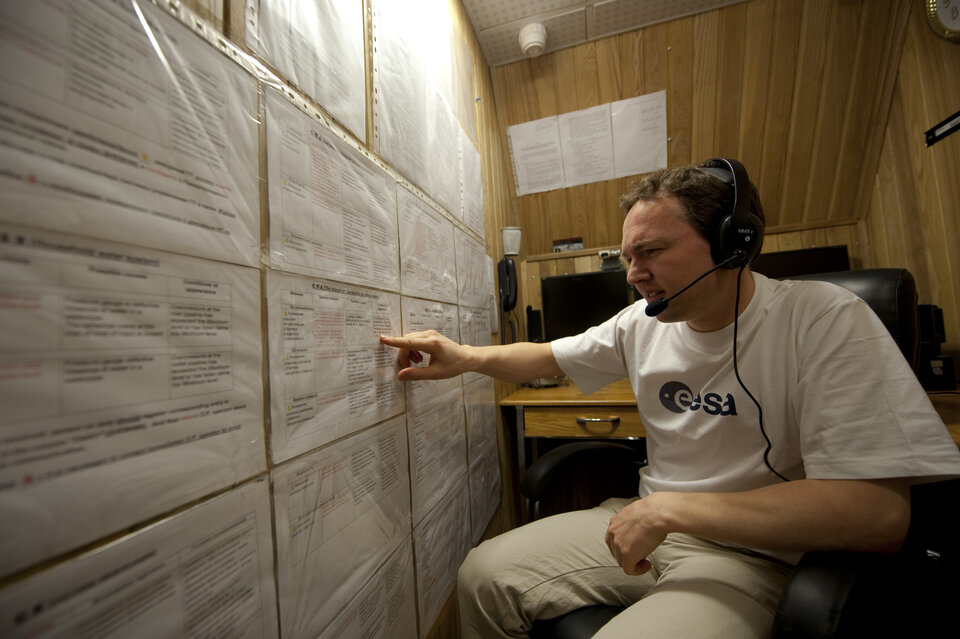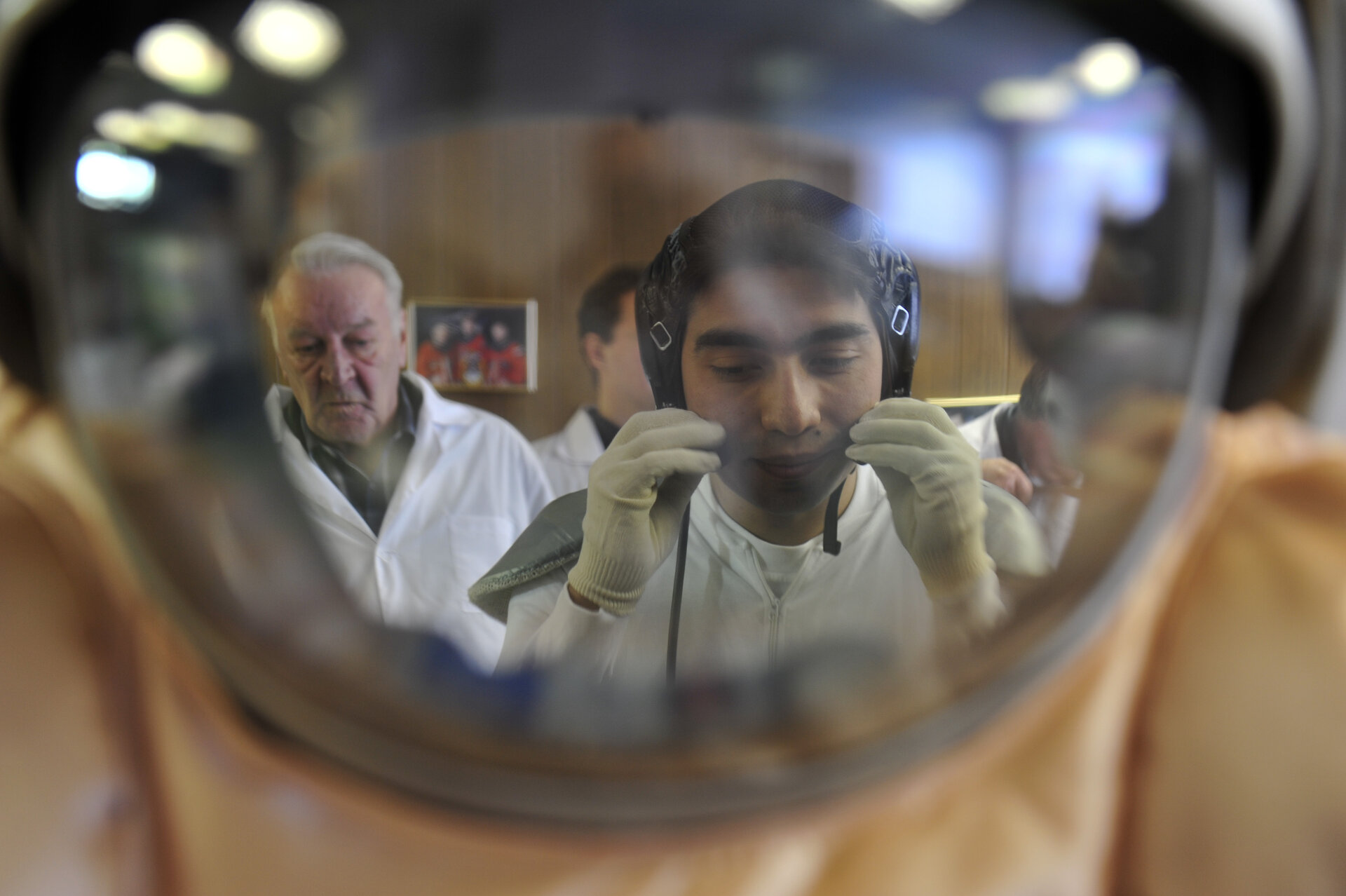To the limit of human endurance
Mars 500 simulates a mission to Mars and is therefore an important part of Europe’s pathway to exploration. Paving the way for human exploration activities in space, such as future missions to the Moon and Mars, is one of the two main aims of ESA’s Directorate of Human Spaceflight.
Four Europeans, Belgian Jerome Clevers, Romain Charles and Arc’hanmael Gaillard from France, and Colombian-Italian Diego Urbina, started their mission training in February. Two will be selected as the crew of Mars500, the first full-duration simulated mission to Mars, starting in a special facility in Moscow next summer.
Why 500? 250 days for the trip to Mars, 30 days on the surface and 240 days for the return journey, totalling 520 days.
Apart from the technical challenges to be met, the big question remaining is the human factor: can humans mentally and physically endure a spaceflight of at least one and half years – possibly much longer – in a closed environment with the same faces, under constant stress and isolated from family and friends on Earth?
The people who will help to answer these fundamental questions started their mission training on 24 February.
The last and the longest test run

The 520-day isolation test is the last part of the Mars500 experiment that began back in 2007. The first phase in November 2007 was a 14-day simulation that mainly tested the facilities and operational procedures. The second phase followed in 2009, when four Russian and two European crewmembers were shut into the facility for 105 days on 31 March. One of the current Europan candidates, Arc’hanmael Gaillard, was a member of the backup crew for the 105-day isolation period.
During the experiment, the crew is hermetically isolated in a limited space with limited consumables and communication only via the Internet, occasionally disrupted and with a 20-minute delay, as for a real Mars mission due to the distance between the spacecraft and Earth.
The crew is monitored and their psychological, medical and physical signs are recorded throughout the mission. This will benefit the technical development and operational planning of long-duration human exploration missions in the future.

Candidates were required to be aged 20–50, motivated, in good health be no taller than 185 cm and to speak English and Russian. They required a background and work experience in medicine, biology, life support systems engineering, computer engineering, electronic engineering or mechanical engineering.
Selection was based on education, professional experience, medical fitness and social habits. Following an initial assessment, candidates submitted results from medical tests and were then invited for interview and screened in a process similar to that used in astronaut selection.

The Mars500 experiment is conducted by Russia’s Institute of Biomedical Problems (IBMP) with extensive participation by ESA. ESA’s Directorate of Human Spaceflight is undertaking Mars500 as part of its European Programme for Life and Physical Sciences (ELIPS) to prepare for future human missions to the Moon and Mars.
The facility is located on the IBMP site in Moscow, in a special building that houses the isolation unit and the operations room, technical services and offices. The isolation facility comprises four hermetically sealed interconnected habitat modules, along with an external module for simulating the ‘martian surface’. The total interior volume of the modules is 550 m³.
Living like astronauts on the ISS

The three European candidates started their training in Moscow for the isolation experiment on 24 February with their Russian and Chinese counterparts. Finally six of them, two from Europe, three from Russia and one from China will form a crew that will spend approximately 520 days (possibly even up to 700) in a mockup.
During the ‘surface operations’ after 250 days, the crew will be divided in half, three will move to the martian surface simulator and three will remain in the ‘spacecraft’. The external hatch will be closed for a month. The crewmembers on the ‘surface’ will also do spacewalks wearing modified Orlan spacesuits

The crew will have all the food needed from the beginning of the experiment and they have to ration out their supplies for the entire time. The diet will be identical to that of the crews on the International Space Station (ISS). Tasks performed by the crew are identical to those of the ISS astronauts: maintenance, scientific experiments and daily exercise. They will follow a seven-day week with two days off, except when special and emergency situations are simulated.
This mission might lack some of the glory and feeling of the real spaceflight, but it is just as tough. The first humans to walk on Mars will surely remember these pioneers.





